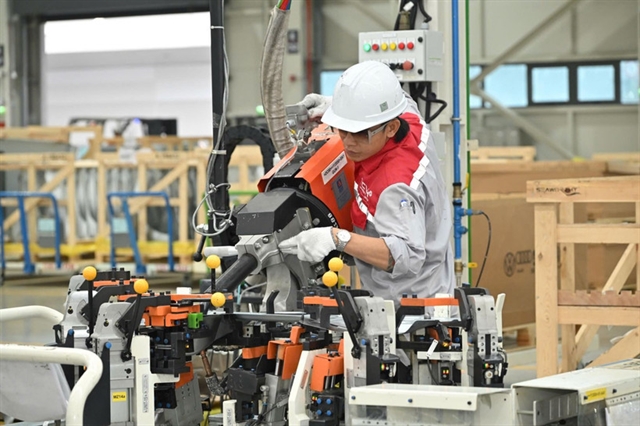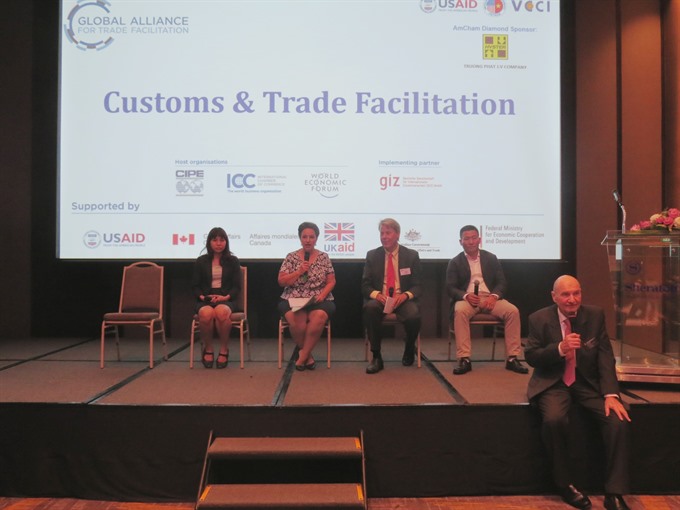 Economy
Economy

A customs bond model for speeding up clearance of goods is required to deal with Việt Nam’s complicated administrative procedures and boost its competitiveness, experts told a conference on trade facilitation in HCM City September 6.
 |
| At a conference on facilitating Việt Nam’s trade, experts say new models such as customs bond will help simplify procedures and increase trade. – VNA/VNS Photo Việt Dũng |
HCM CITY – A customs bond model for speeding up clearance of goods is required to deal with Việt Nam’s complicated administrative procedures and boost its competitiveness, experts told a conference on trade facilitation in HCM City on September 6.
The system is meant to streamline import processing, with the bond being an agreement that ensures an importer (who would buy a custom bond from an approved surety company) will pay all fees and taxes as well as comply with laws and regulations.
The surety company will act as a third party who will pay the customs if an importer is unable to fulfill its obligations before seeking reimbursement from the importer.
Custom bonds thus help speed up goods clearance.
The model is expected to be trialled beginning in 2020.
Nestor Scherbey, senior policy advisor to the Global Alliance for Trade Facilitation (GATF) in Việt Nam, said Việt Nam would be the first developing country in Asia to implement a customs bond system for commercial exports and imports.
He said a large portion of trade costs stems from economic policies and regulations, especially administrative procedures for border management, and according to a World Bank study of 126 countries, around 75 per cent of delays are due to administrative hurdles such as certification, inspections and other custom procedures as opposed to physical infrastructure.
“Outdated trade regulations combine with burdensome and non-transparent administrative procedures to inflict a burden on economic growth through trade that is the equivalent of a 164.25% ‘Invisible Tariff or Tax’.”
The invisible tax is the most significant non-tariff or technical barrier to Việt Nam’s exports, and is especially challenging for small to medium-sized businesses, as most of Việt Nam’s businesses are, since they lack the resources to overcome it, he added.
Nguyễn Thị Thanh Nhàn, customs manager at Intel Products Việt Nam, said adaptation to new technologies and regulatory changes and more involvement of private businesses in customs reforms are needed.
Reducing export clearance time by a day can increase annual exports by around 1 per cent, which is around $2.13 billion, Scherbey said.
In the first half of this year Việt Nam’s exports and import were worth $113.93 billion and $111.36 billion. – VNS




